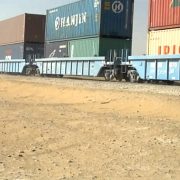Saudi Arabia Robust Growth in Freight
The global market of logistics & warehousing services in Saudi Arabia has shown a robust growth over the past few years owing to the increasing globalization and expanding retail & FMCG market. Also, the rising e-tail market worldwide has also positively impacted the market size of logistics industry. The companies operating in e-commerce sector requires warehouses and logistic partners in every country of the world in which they are operating.
Rising government support in all the countries to improve trade relations with other countries, improving infrastructure (roadways, railways, airports and seaports), modern technologies, increasing number of logistics and warehousing service providers has driven the size of the industry.
Asia pacific has majorly contributed to the revenues of the global logistics & warehousing market. The demand for logistics and warehousing services in emerging economies in the region such as Pakistan, India, China, Singapore and others has accelerated owing to the expanding industrial activities and government support in these countries. China is the major contributor to the growth in this region due to the presence of a large manufacturing base. Saudi Arabia logistics market has shown an impressive growth rate in 2015 owing to the expanding manufacturing & retail sector, rising expatriate population, growing number of foreign companies and increasing value of exports and imports in the country
Saudi Arabia
Saudi Arabia has established itself as a leading country in logistics & Warehousing Industry under the GCC region. The kingdom is one of the fastest growing countries in the logistics and warehousing industry at the global level.
Logistic services in the country have been successful in connecting different export and import markets of various countries across the world. Furthermore, over the past five years, billions of dollars have been invested by the government of Saudi Arabia towards development of logistics infrastructure. Saudi Arabia has been the foremost nation in the Middle East to focus on logistics.
The freight forwarding sector is the leading segment towards the revenues of the logistics and warehousing industry.
Saudi Arabia logistics & Warehousing industry has number of leading players in the organized market such as DHL, DB Schenker, Aramex, Panalpina, UPS, TNT , Fed Ex and others. The market in the country is majorly driven by e-commerce industry and rising trade volumes in the country.
The rising demand of cold chain logistics in the country due to the increase in the consumption of meat & animal food has triggered the size of the logistics industry. The warehouses and fleet required for transportation of cold chain products are costlier than the logistics requirement for other products.
For more information on the market research report please refer to the below link:
https://www.kenresearch.com/automotive-transportation-and-warehousing/logistics-and-shipping/saudi-arabia-logistics-market-report/77655-100.html
Importing/Exporting?
Obtain the best rates and service with Genesis Freight Services Ltd













 Latest Tweets
Latest Tweets